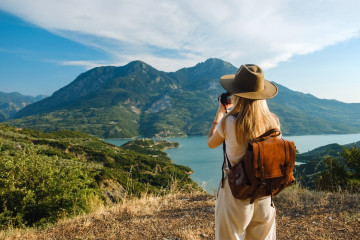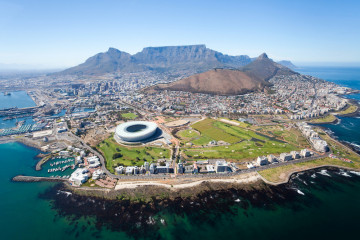Imagine yourself in Sydney, or maybe Melbourne, walking along a standard suburban street. You’re carrying a camera as you explore the neighbourhood, a big DSLR with a long lens.
You turn a corner, onto a quiet cul-de-sac, and there’s a child playing outside a house, in their front yard. Perfect. You get a little closer then raise the camera and start snapping away, taking photo after photo of the child as he or she plays in the garden. Great. Maybe you’ll put it on Instagram later.
This sounds… weird, huh? Creepy. In fact, you just wouldn’t do it. You would probably call the police if you saw someone else doing it.
And yet, this is what travellers do day in, day out, as if it’s completely normal. Not in the fenced communities of the developed world, of course – not in Sydney or Melbourne or London or Paris. Because that would be weird.
Instead, we do it in poor communities in the developing world. In villages. In small, struggling communities. We turn up with our fancy cameras and our iPhones and we take photos of children, strangers to us, like it’s completely normal, like it’s OK, even without their express permission, and certainly without the permission of a parent or responsible minder.
I’ve seen it happen for years. I’ve seen it happen recently. Check your social media feed and I’m sure you will find evidence of it.
Why do travellers do this, photograph foreign children in poor communities? There are a few justifications. The most common is that this is a simple, universally understandable way to interact: you take a photo, then you turn the camera around and show the child the photo. Everyone laughs, you have fun.
And I can see that that’s real, that’s genuine. But it still doesn’t change the fact that these children aren’t tourist attractions, they’re people, and they can’t properly consent to having their photo taken. And they definitely can’t control what you do with that photo once you’ve walked away and gone back to your nice hotel with wifi.
Have you uploaded their image to the internet, to your social media feed? Have you geotagged the location, thus revealing to the world where these particular children can be found? Have you sought the dopamine hit of clicks and likes without really taking into account the rights and the desires of the people in your picture?
There’s another explanation for this behaviour, and it isn’t a pleasant one. Essentially, travellers from the developed world tend to feel a sense of paternal ownership of people from communities in developing countries.
We feel a right to treat poor people – and let’s say it out loud, usually people of colour – differently to the way we approach people back home. Picture that suburban street in Sydney or Melbourne. You would just never take a photo of a child in a situation like that. But travellers feel confident to do it in poor communities because the same rules don’t apply.
It’s colonialist. It’s entitled. It’s frankly racist.
It’s also usually entirely self-serving, particularly for those who insist on appearing in the photo with the children to later post on public forums. It’s a way of projecting to the world something about yourself – here I am in an orphanage, in a school, in a village, just mixing with the little poor kids, and we’re all having a great time.
You’re not taking photos like that or posting photos like that to social media for any other reason than your own gratification. And meanwhile you perpetuate the stereotype of these children and their communities needing help from the developed world, or just being so overjoyed by your mere presence.
Here’s something else to consider, too: it’s actually quite condescending to even imagine that you’re flipping the camera around and showing these kids an image of themselves for the first time. That might have been true when you were travelling 10 or 20 years ago, but these days smartphones rule the world. Half of your subjects probably have cameras of their own. They’ve seen what they look like.
Plus, if you’re there visiting them they probably live in a touristy area. This is not the first time a white person with an iPhone has rocked up.
Travellers and travel providers are starting to wise up to this. I was on a tour recently with G Adventures (for full disclosure, I was travelling as a guest of the company), and the rules for the group were announced on day one: no taking photos of children, unless you can obtain the permission of their parent or guardian.
That’s a rule that every traveller on every trip should be going by. It might sound like this is the fun police ruining potential, genuinely good interactions between travellers and residents of other countries, but you only have to think back to that Sydney or Melbourne street to realise that what you’re doing isn’t right.
In fact, that’s generally a great question to ask yourself any time you’re doing anything while travelling, though particularly through the developing world. Would I do this at home? Would this be OK in my country, in my city?
If the answer is no – just don’t do it.


